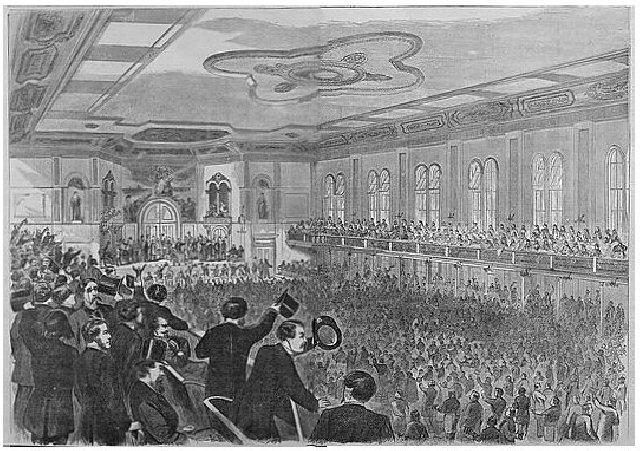Secession is the withdrawal of any part of the country. The term has Latin roots. In the literal sense, the word secessio means "I'm leaving." Secession is the result of separatism. The concept in this meaning began to be used during the war of independence in America. 
General information
Secession right in federal states may be recognized by the legal system. For example, it was provided for in the Constitutions of the USSR 1924, 1936 and 1977. It may not be recognized by the Basic Law. For example, the right to secession is not provided for in the Constitution of the SFRY. If it is not recognized, the problem of applicability of the principle of territorial integrity or the possibility of the population to self-determination arises. International law gives priority to the right to independence in the case of colonies.
Procedure specifics
In Canada and Great Britain, in order to gain independence of colonial and historical territories, it is enough to hold a referendum to support the secession by the majority. Despite the fact that the public meetings did not give a positive result, Scotland and Quebec have a similar opportunity. In these territories, the number of supporters of the branch increases. Remains Wales, Northern Ireland and England. They, as subjects of the federation, have the right to secession (so far theoretically). US law does not provide (but is not prohibited) for the separation of states. In order to gain independence, Puerto Rico and some Pacific countries will also have enough relevant referendum results. The population of these states has not yet expressed such a desire. 
Practical implementation of the opportunity
Over the past decades, quite a few separatist movements and peoples have fought for independence. As a result of the collapse of Yugoslavia, Czechoslovakia, the USSR, the decolonization of East Timor and Namibia, the cessation of the association of some Pacific islands with America, new countries appeared. Along with this, a successful secession took place in some territories. These are countries such as South Sudan, Singapore, Bangladesh, Eritrea. In 1861, the Confederate States separated from the United States. The struggle for independence then escalated into a civil war.
Comparative characteristics
Many consider secession to be civil disobedience or revolution. It should be said here that in theory there is no particular complex of distinguishing features of these definitions. For example, the concept of "civil disobedience" is used by different authors in different ways: both narrowly and broadly.  If we compare secession with revolution, the difference lies in the purpose of these events. The separatists do not seek to overthrow the existing government, do not want to make fundamental changes to the socio-political, economic and constitutional system of the country. Their goal is to limit the jurisdiction of power in order to remove from its influence the group of the population and the territory in which it resides. Thus, the most important difference between secession and revolution is that successful separation and gaining independence does not provide for the overthrow of the current government (although in practice it can lead to this). Separatists do not deny the existence of power as such. They resist the impact that the state exerts specifically on their group and on the territory where they live. The attempt to secede is a striving for independence from the government.However, in this case it is absolutely not necessary that this will be a complete political removal.
If we compare secession with revolution, the difference lies in the purpose of these events. The separatists do not seek to overthrow the existing government, do not want to make fundamental changes to the socio-political, economic and constitutional system of the country. Their goal is to limit the jurisdiction of power in order to remove from its influence the group of the population and the territory in which it resides. Thus, the most important difference between secession and revolution is that successful separation and gaining independence does not provide for the overthrow of the current government (although in practice it can lead to this). Separatists do not deny the existence of power as such. They resist the impact that the state exerts specifically on their group and on the territory where they live. The attempt to secede is a striving for independence from the government.However, in this case it is absolutely not necessary that this will be a complete political removal.
Important point
In a number of cases, a separatist group may advocate its separation from one state with a view to its subsequent accession to another. For example, a certain percentage of the population of Transylvania want to gain independence from Romania, and then become part of Hungary. In this regard, it is somewhat incorrect to define secession as a disconnection from an existing state to form its own sovereign entity. In practice, in most cases, separatists seek independence. 
Differences from Civil Disobedience
They are difficult to determine. Unlike secession, civil disobedience is opposed to revolution. There are several reasons for this. First of all, it must be said that civil disobedience, like secession, does not imply the overthrow of power. Moreover, in most cases, it provides for the recognition of its legitimacy. Participants of disobedience openly and knowingly commit violations of the law, resist a certain policy or activity of the authorities. They do this in accordance with their understanding of political morality. With secession, the separation process is more constructive.



